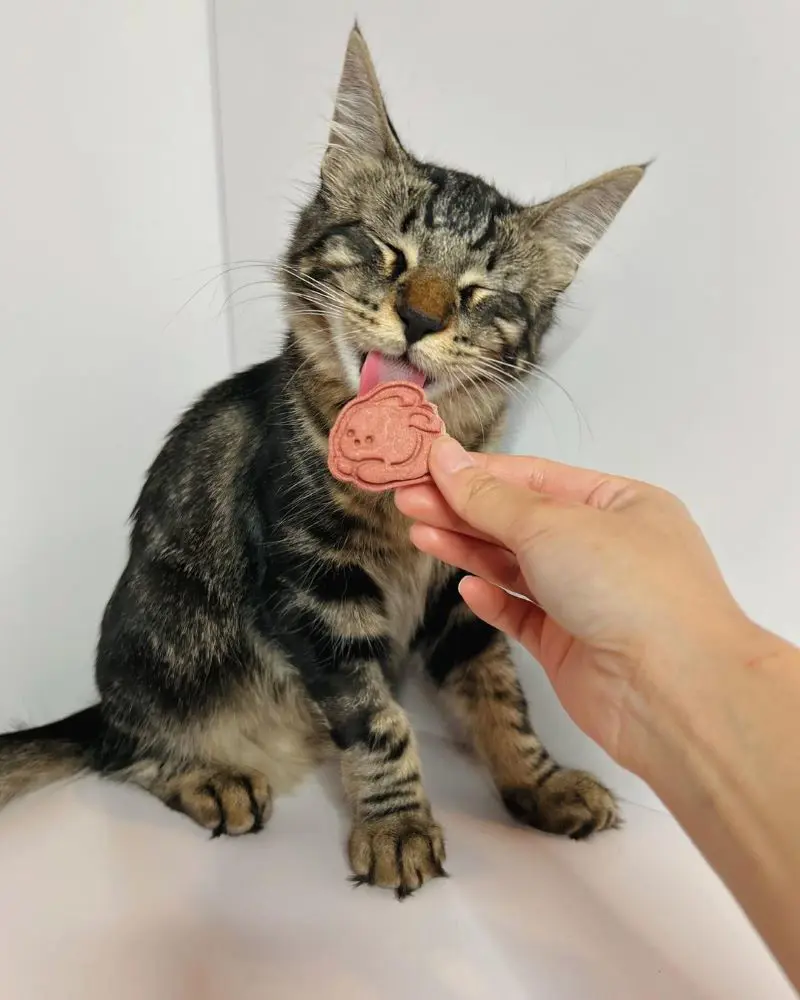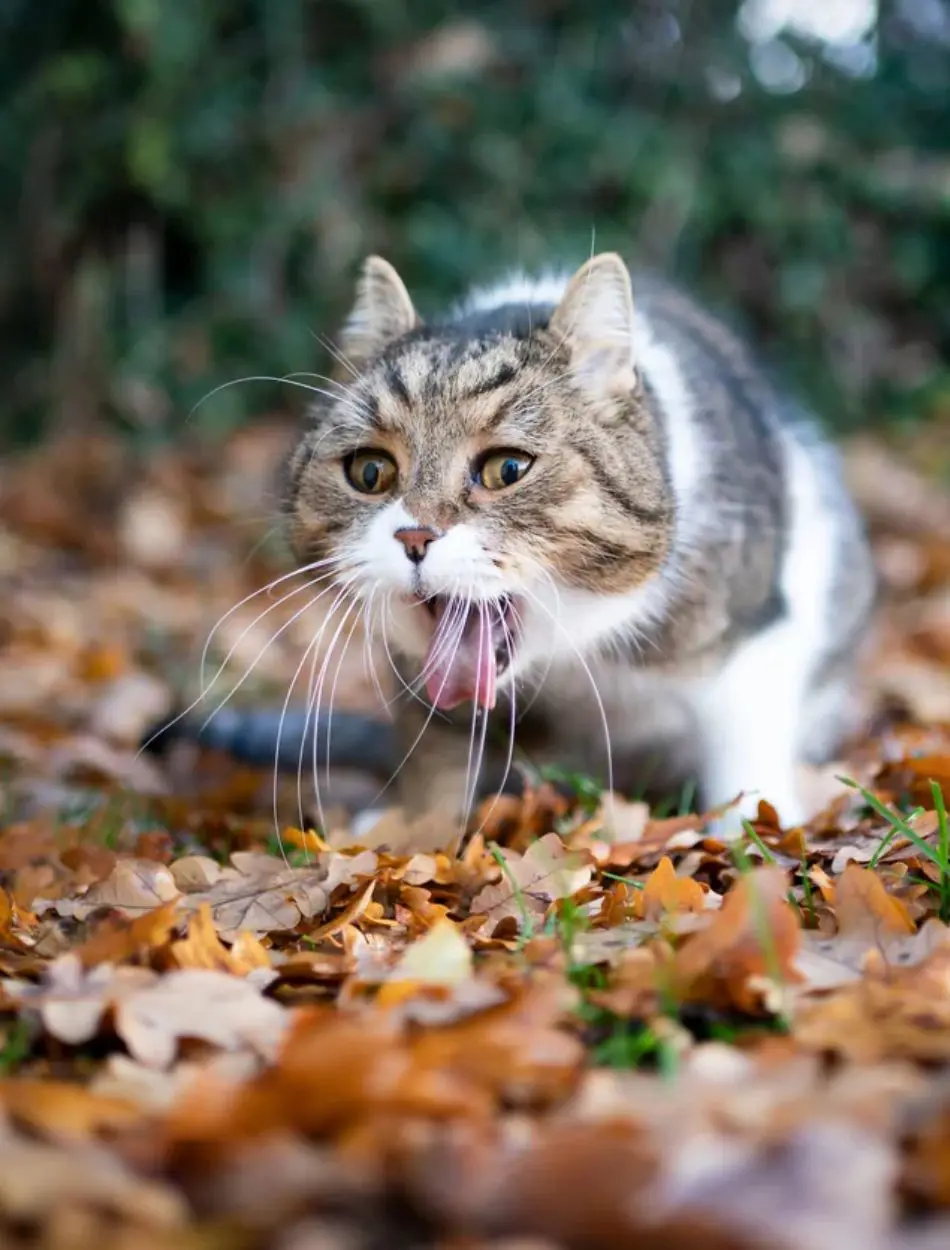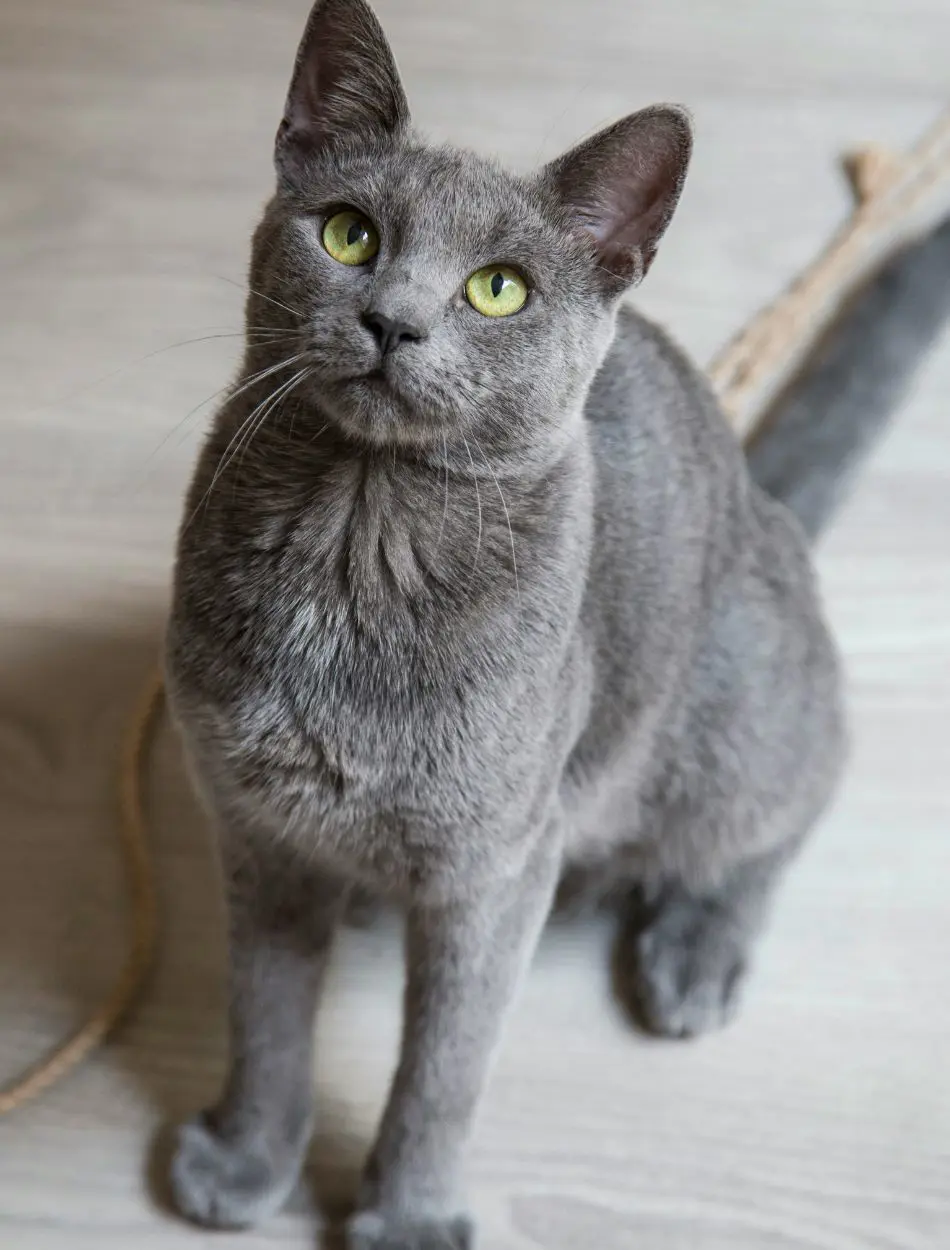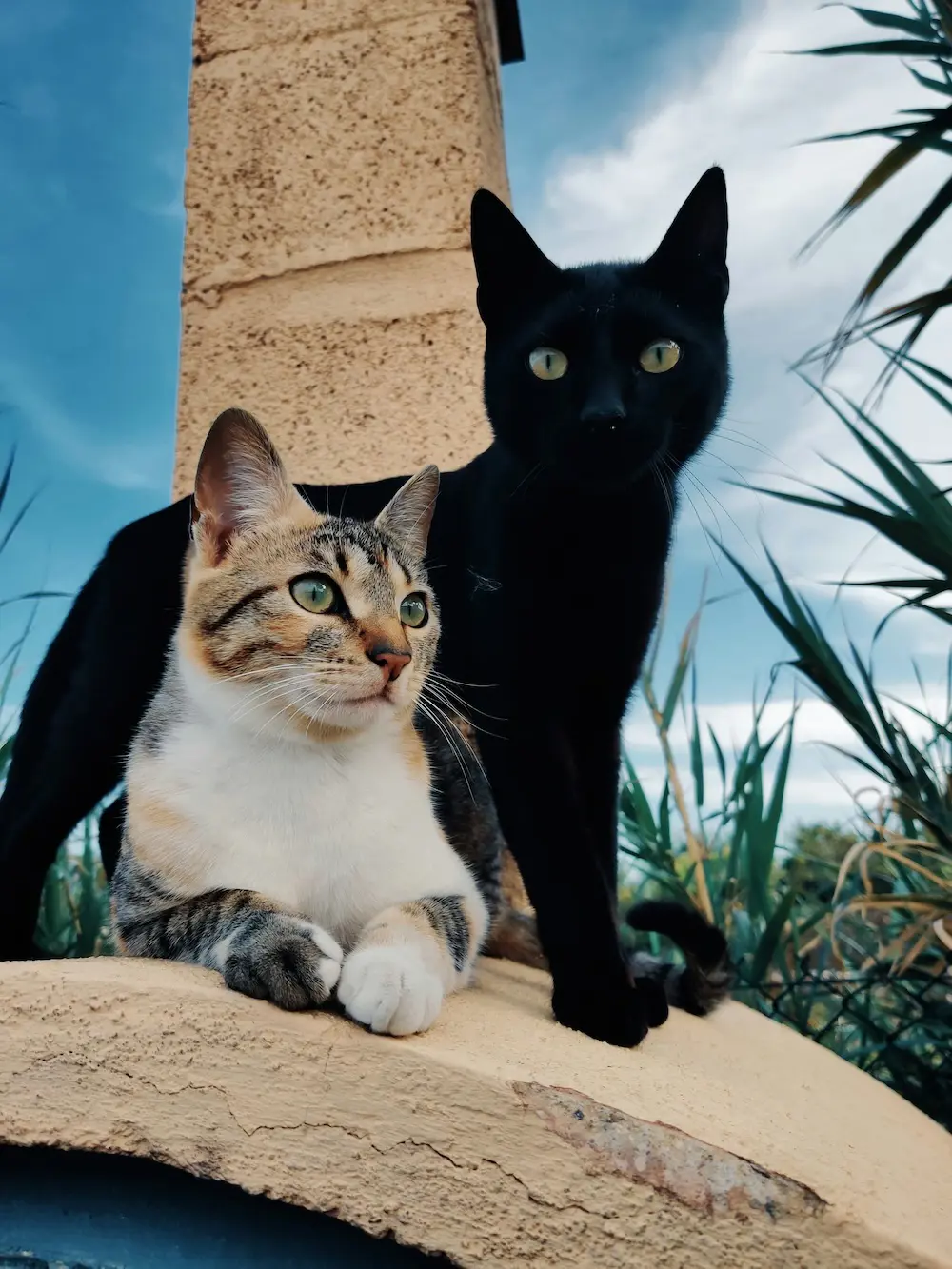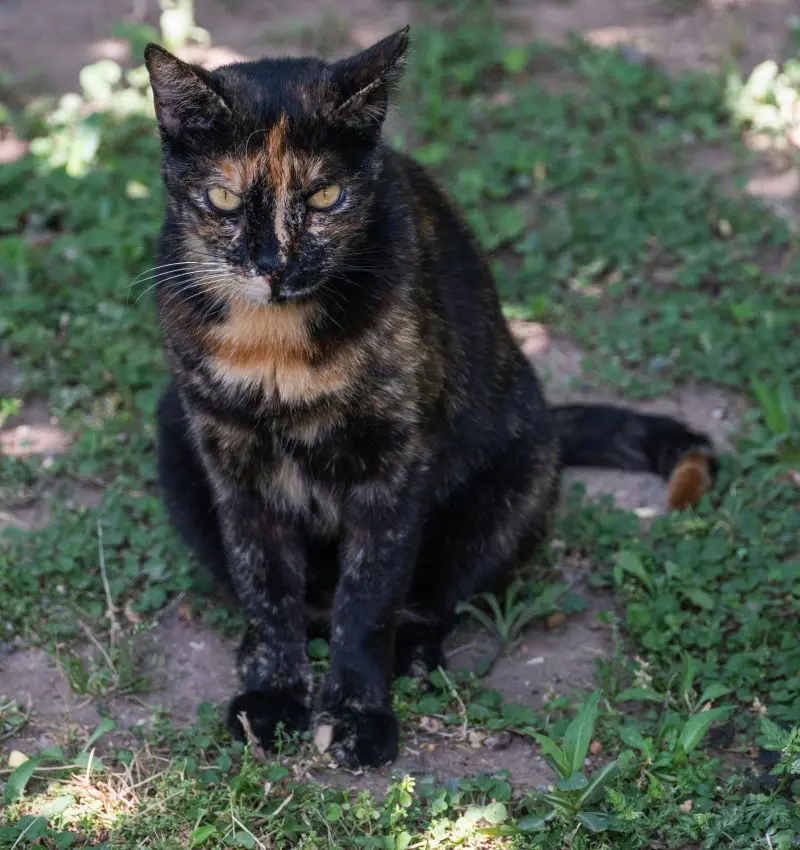A Step By Step Guide On How To Give A Cat A Pill

Since cats are regarded for their independence and generally tend to refuse to take medications, giving them a pill can be a tough attempt for many pet owners. This makes the process stressful for both the pet and the owner.
This guide is supposed to help you overcome this issue with comfort. You can reduce stress and make sure your cat gets the attention they require by using these useful steps and advice.
1. Preparation
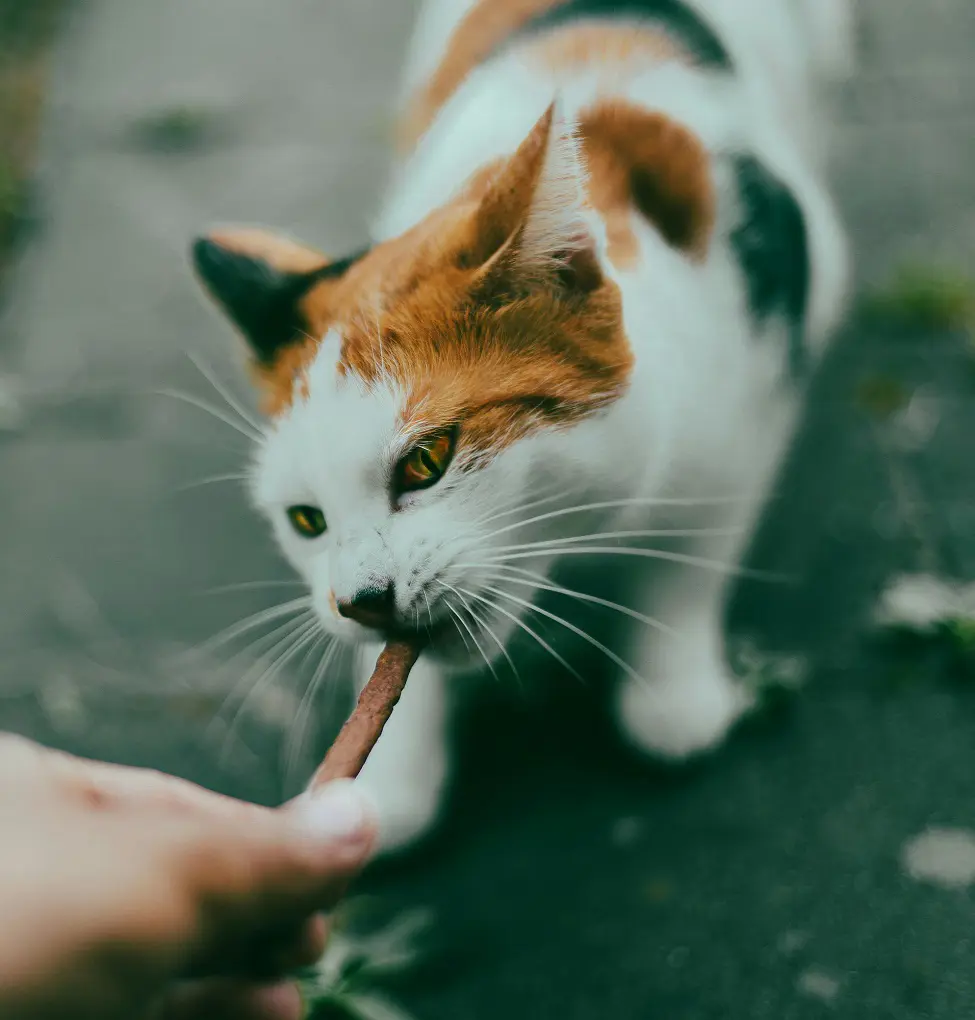
Check the Pill
Make sure you have the right medication and dosage, as directed by your veterinarian before you start. Errors can occur, and giving your cat the incorrect prescription or dosage can be dangerous.
While some tablets can be divided into smaller amounts, others need to be taken as directed. For example, breaking or crushing extended-release or coated pills can change how the pill is absorbed by the body.
To find out if a medicine can be divided or needs to be given whole, always check with your veterinarian or read the directions on the label.
Gather Supplies
To gently restrain your cat and stop them from scratching or running away, a towel might be a helpful tool. This is beneficial for cats that tend to be anxious or have trouble. Keep a handful of your cat's preferred treats close to reach.
These may be used as a treat for your cat or to help cover up the flavor of a remedy that has been combined into food. Likewise, having a supply of syringes on hand can facilitate and improve the protection of the pill-administering system.
Syringes make it less complicated to get the pill into the lower back of the cat's mouth and are less likely for them to bite you. If your veterinarian has allowed the use of a syringe (without a needle) to offer liquid medication or a tablet dissolved in liquid, then it could be useful.
Choose a Quiet and Cozy Location
Choose a room with few distractions and a secure feeling for your cat. Avoid crowded, noisy, and bustling situations as they may exacerbate your cat's anxiety and make them less receptive to medication.
There shouldn't be any hiding places in the room where your cat could get out and complicate things. A bathroom or tiny bedroom can be a good option because there are usually fewer hiding spots for cats and they are simpler to clean up after a messy session.
To give your cat a cozy spot and keep them from slipping, you might want to place a soft blanket or towel on a sturdy surface like your lap or a table.
2. Using a Towel for Restraint
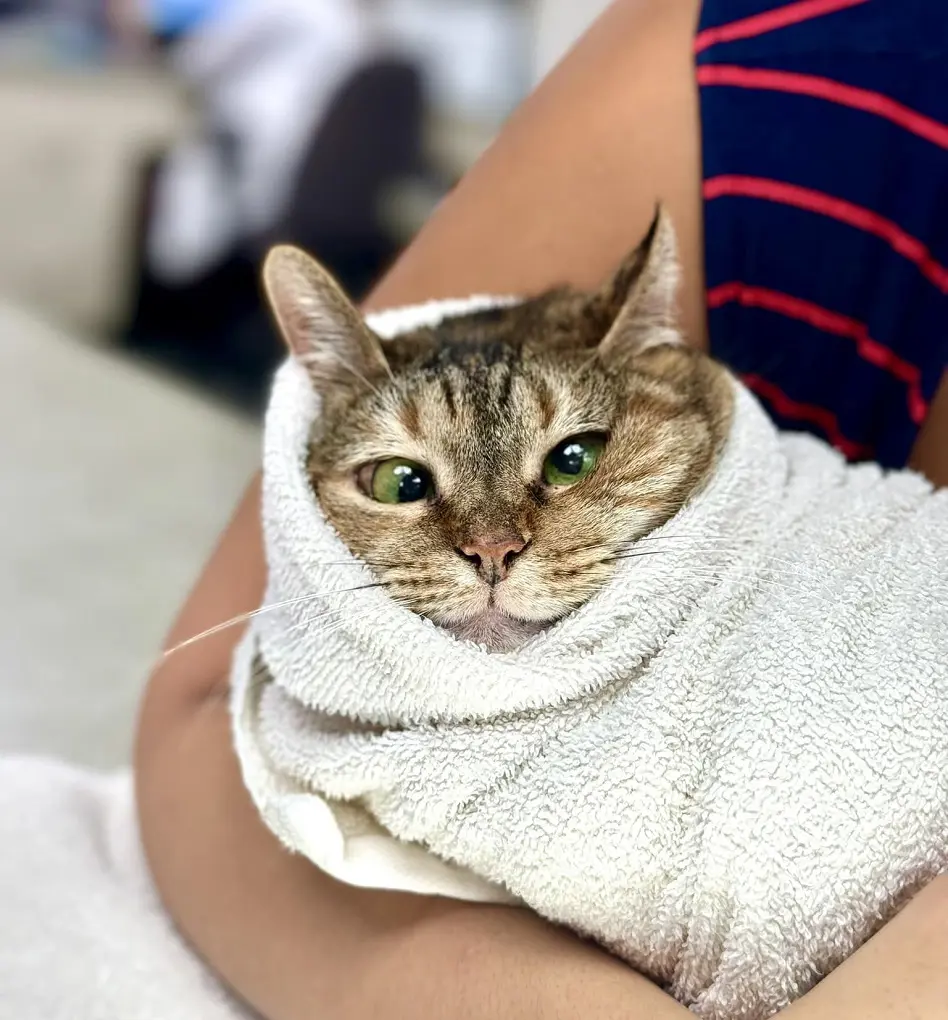
Create a Kitty Burrito
First, choose a big, plush towel. Spread it out evenly on the area where you plan to put your cat and make sure the towel is large enough to fully encircle your cat, but not so thick as to be difficult to manage.
Gently place your cat in the middle of the towel, with their length along one edge. Verify their comfort and calmness before moving forward. To keep them calm, you might need to comfort them.
To secure your cat within the towel, take the opposite side of the towel and fold it over the previous fold. To make sure the towel stays in place, the ends should be tucked under their body or fastened around them.
Any extra towel should be tucked beneath your cat's body so that they are completely covered in it. This will keep their bodies and legs in place and stop them from pawing their way out or pushing the pill away.
Secure the Head
The head of the cat should stay free and visible even when the body is firmly wrapped. This helps lessen the cat's stress level by enabling you to give the medication without making them feel too constrained.
Using one hand, gently grasp your cat's head. Holding the base of your head, place your thumb and fingers just behind their ears. They can still open their mouths, but you have control over how their heads move because of this grasp.
3. Administering the Pill

To feed medicine to a cat involves trust, delicate handling, and patience. To ensure everything goes as smoothly and stress-free as possible for you and your cat, here's a thorough explanation of each stage.
Hold the Cat Securely
Select a solid surface, such as the floor, a table, or even your lap, and make sure you're sitting comfortably and have a solid hold on the cat if you plan to use your lap. You can also get leverage and control by using a table or countertop.
Position your cat so that its back is to you as this gives you more control over their head and body motions and makes it more difficult for them to retreat.
Keeping your fingers away from their sharp teeth, this grip allows you control to open their mouth and helps steady their head.
Open the Mouth
Tilt the cat's head back a little while maintaining a firm grip, and their lower jaw naturally drops open somewhat at this position, which facilitates a full mouth opening.
Apply gentle pressure to the lower jaw using your other hand, pressing with your thumb on one side and your forefinger on the other. The mouth ought to open up more as a result of this. To prevent creating any discomfort or worry, be gentle.
To soothe your cat, talk softly and move slowly. They may become frightened by sudden movements or loud noises, which will complicate the process.
Place the Pill
Try to get the pill as far back on the tongue as you can while keeping your mouth wide, there is less chance that the cat will spit it out, the further back you place it. The pill should ideally be positioned close to the throat, on the back of the tongue.
Be extremely cautious to avoid the cat's deadly teeth if you want to use your fingers. Place the tablet rapidly but gently, being careful to remove your fingers as soon as possible to prevent getting bitten.
A pill popper can be quite helpful if you find it painful to use your fingers or if the pill needs to be inserted deeper. The device helps to safely and painlessly position the pill at the back of the cat's mouth. After inserting the popper and releasing the tablet, take out the tool right away.
Close the Mouth
Your cat's mouth should close soon once the pill is placed, and it should be held securely with a firm yet gentle grasp. This lessens the chance that the cat will spit the medication out. You can gently touch your cat's throat or gently blow on their nose to assist them in swallowing.
These activities frequently cause the body to naturally swallow, and for a short while, keep the mouth shut and look out for any indications that the cat is swallowing, like licking their lips or moving their tongue.
4. Encouraging Swallowing
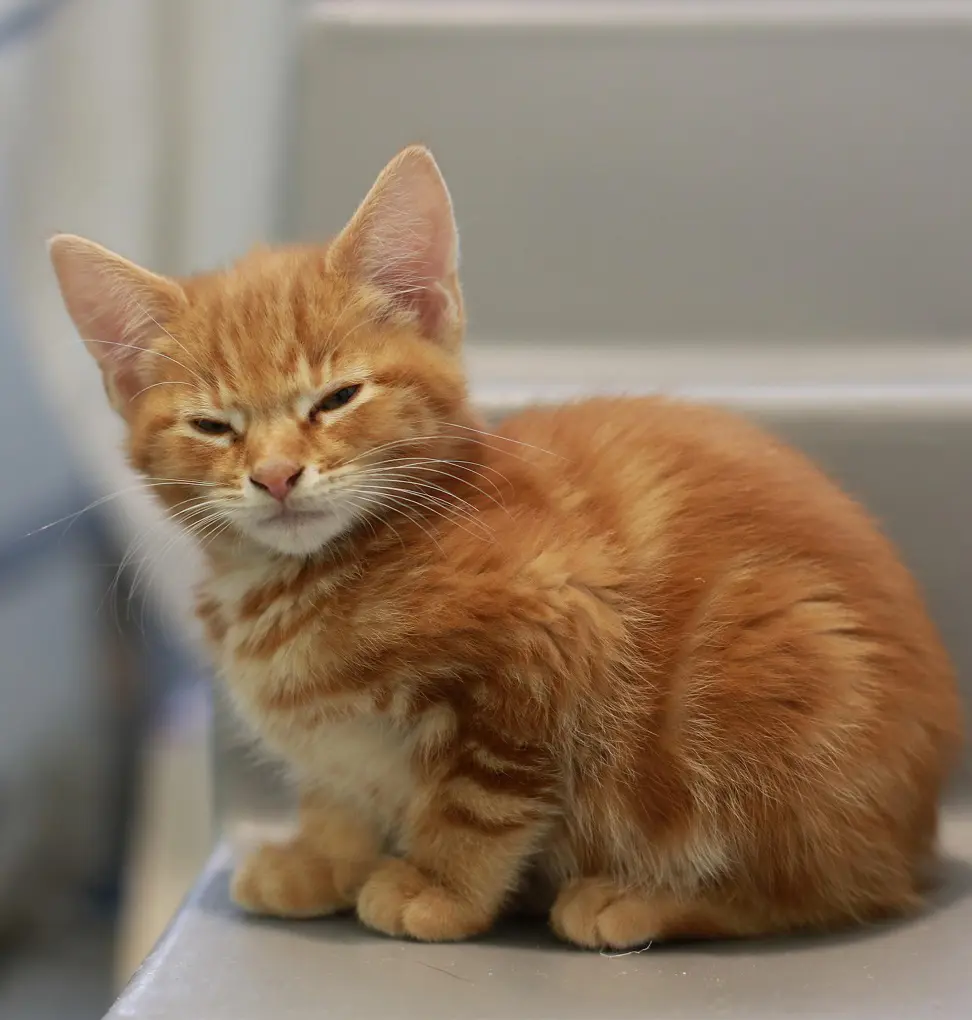
Make sure your cat swallows the next medicine after you've managed to get it into their mouth. Cats are skilled at spitting out pills unexpectedly or retaining them in their mouths for extended periods.
Here's how to help your cat swallow the medicine to complete the task.
Observe
Once your cat has the pill in their mouth, gently close their mouth and hold it closed with a firm yet soft grasp. If you hold their lips shut for a few seconds, the cat won't spit the pill out immediately. So, watch your pet very carefully.
Licking their lips or nose, which typically occurs after swallowing, is one of the common indicators that they have swallowed. Also, the cat may make a tiny gulping action or move their tongue in a manner that seems to indicate they are forcing the tablet down their throat.
Make sure your cat isn't holding the pill in their mouth by keeping a brief watch on them even after you release them. Because they may be fairly cunning, some cats may try to spit it out if you look away.
Offer a Small Treat
Give your cat a treat just after giving them the pill. This accomplishes two goals: it helps them forget about the pill's flavor by providing positive reinforcement and connecting the event with a reward.
Treat-eating can aid in your cat's swallowing of any leftover pill fragments or mask the flavor of any leftover medication. As a result, the cat is less likely to attempt to spit the pill out afterward.
After taking medication, some cats can choose to sip water instead. You can either make sure their water bowl is close by and easily accessible, or you can administer a little bit of water with a syringe (without a needle).
5. Alternative Methods
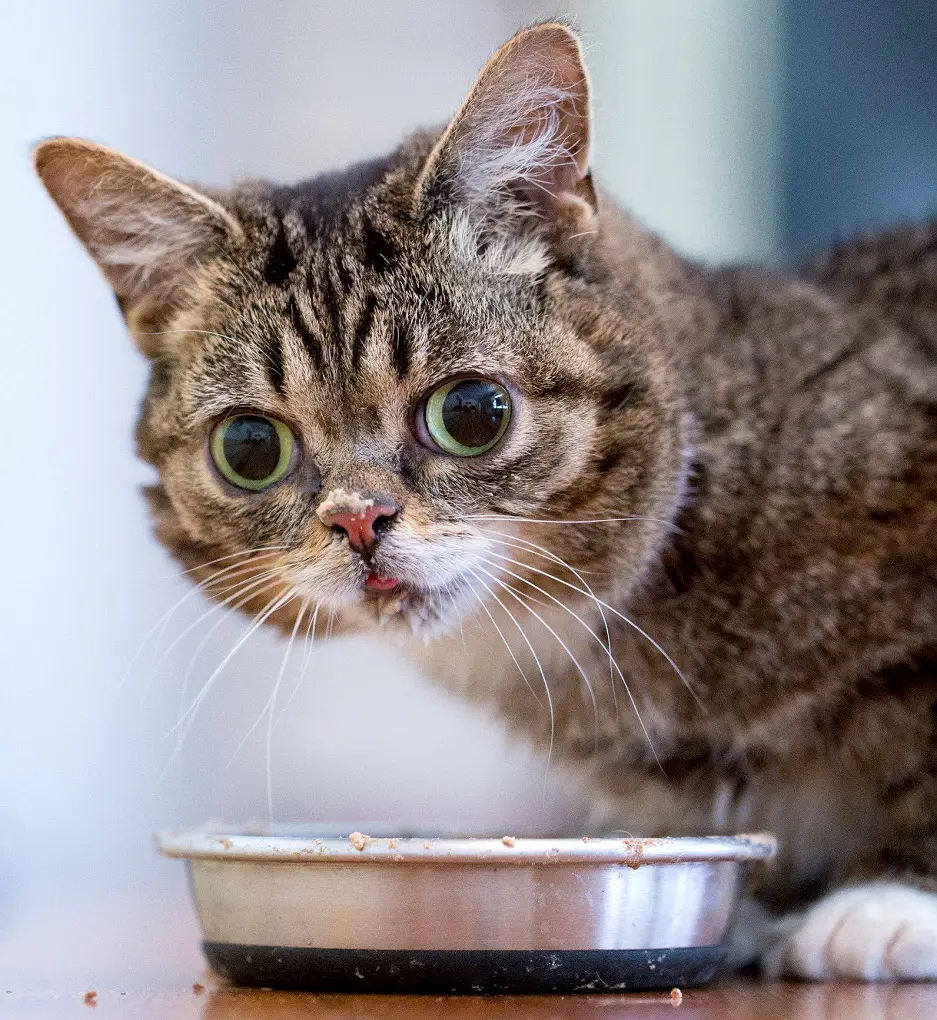
If feeding your cat a pill by hand is turning too hard, there are a few other techniques that might simplify the technique and decrease pressure for both you and your cat. These techniques take benefit of your cat's innate habits and disposition to get them to voluntarily take their medication.
Hide in Food
Check with your veterinarian that the medication can be divided, crushed, or administered with food before attempting to conceal it in food. Certain medications must be taken exactly as prescribed to be absorbed; they shouldn't be changed or combined with meals.
If a pill is hidden in a small bit of wet cat food or a soft treat, many cats are more inclined to ingest it. To make sure your cat eats the complete dosage of medication, choose a meal that they enjoy, but make sure it's a little piece.
Certain cats have a keen sense of where medications are hidden. To determine what works best, you may need to try a variety of foods or treats. To make sure your cat will eat it, start with a modest amount.
Use a Pill Dispenser
A pill popper is a tool that helps deliver the pill precisely to the back of the cat's throat. It is sometimes referred to as a pill gun or pill dispenser. This makes the medication easier to swallow and reduces the chance that your fingers may get bit.
To use it, just gently open your cat's mouth, place the pill into the popper, and push the popper towards the back of the mouth. After the pill is released by pressing the plunger, swiftly take out the popper.
This technique works especially well for cats who won't have their mouth opened easily or for medications that need to be put deep in the mouth to prevent spitting.
Crushing Pills
Not all pills can be crushed because doing so may alter how well the medicine works or irritate the stomach. Always check with your veterinarian if smashing the pill is a suitable technique.
If allowed, crushed pills can be diluted with a small amount of broth, a favorite beverage like tuna juice, or strong-tasting wet food to hide the bitter flavor. Make sure there is enough mixture in the tiny enough dose for your cat to finish it.
It is possible to coarsely crush medicine into a powder using specialized pill crushers, making it simpler to combine medication equally with food or fluids as your cat will receive the entire dosage if you do this.
Tips for Success
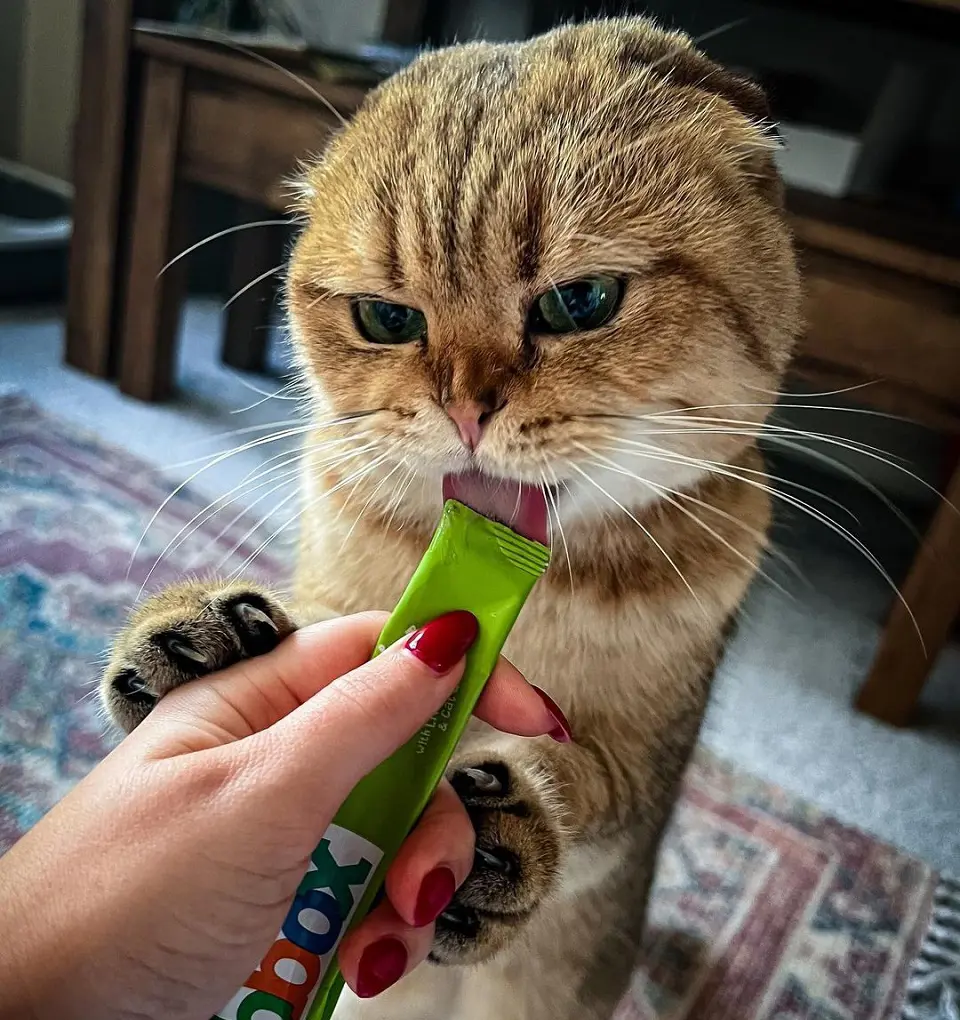
Giving cats their medications might be difficult, but with the appropriate methods, it can become a doable routine.
Stay Calm
Cats are highly sensitive and able to sense your feelings, so your cat will probably get more nervous if you're stressed out or anxious. Keeping your cool will help to create a more comfortable atmosphere, which will make it simpler to handle your cat and administer the medication.
Select a peaceful, comfortable area where you and your cat can concentrate without being interrupted. To prevent upsetting your cat, walk slowly and cautiously and talk in a soothing, gentle tone.
Practice Makes Perfect
If your cat needs medication regularly, make an effort to create a reliable schedule. Having a routine and a predetermined schedule can help cats feel less stressed since they are creatures of predictability and they could grow used to the procedure over time.
It can be helpful for novices to practice touching and gently opening your cat's mouth without offering them a pill. Your cat can become accustomed to being handled and caressed near its lips with the help of brief, soothing sessions.
You and your cat will both grow more accustomed to the procedure with repetition. Praise and incentives should be given after each effective administration to reinforce good conduct and gradually reduce tension.
Seeking Help if Needed
Do not hesitate to get help from your veterinarian if you are experiencing ongoing problems. Veterinarians may give advice unique to your cat's needs and temperament as well as show the finest pill-giving practices.
Cautions
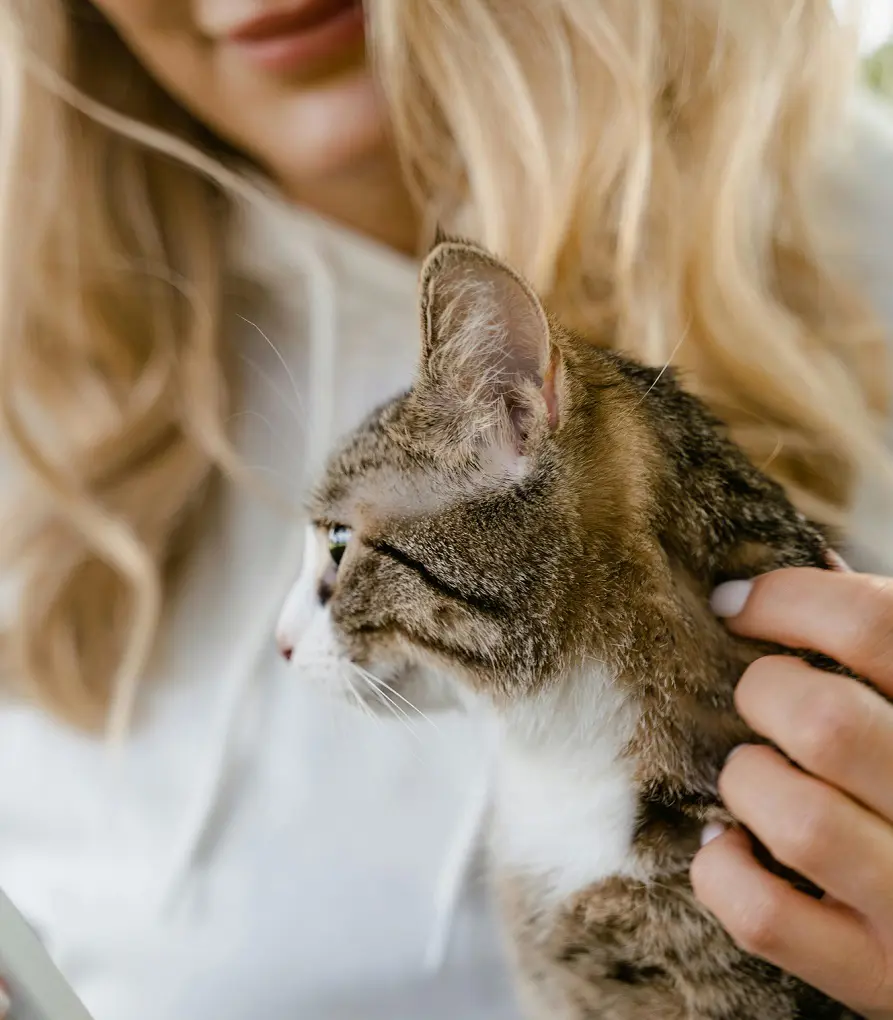
Medication administration to cats needs to be done with caution to prevent issues. Above all, never split or crush pills without your vet's permission. Some medications are coated, time-released, or have unique formulations that can change and cause negative side effects or ineffective treatment.
Handle liquid medicines carefully as well; give them slowly and softly to avoid aspiration or choking. A short burst could overwhelm your cat and make them breathe in the liquid, which could cause respiratory problems.
For advice on how to give medication to your cat based on its needs and the kind of medication provided, speak with your veterinarian. To guarantee the security and efficacy of the pill regimen, your veterinarian can offer crucial insights and customized guidance.
By taking these measures carefully, you can preserve your cat's health and make sure the medication is given as safely as possible.
Recent posts
Cats
How Much to Feed a Kitten: A Complete Chart, Schedule And Caring Guide
As cats are fast-growing, their nutrient requirement can change quickly, sometimes within a few days. Generally, a food schedule consisting of small amounts spread throughout the day is much better than feeding 2-3 large meals. If you are unaware of ...
Why Is My Cat Throwing Up? 16 Common Reasons
Your cat doesn't always give you a clue why their tummy is troubling them so much that it is hurling hairballs or something more serious. Why does your cat vomit? From simple dietary indiscretions to a myriad of other common and complex conditions, t...
18 Signs A Cat Is Dying
One of the most difficult things to witness as a pet owner is seeing your feline's degrading condition. They are known to hide their pain and discomfort during the end of their lives. It is important to know the signs a cat is dying to offer comfort ...
Cat Poop Color Chart: How To Tell If Your Cat's Poo is Healthy
Monitoring your cat’s poop can offer essential clues about their health. While it appears to be a messy chore, taking note of the color, texture, and consistency of your cat's stool can warn you of underlying health troubles. The cat poop color...
15 Hypoallergenic Cat Breeds
Fur shedding, while a routine part of a cat's hygiene, can be a source of irritation to their owners. Especially in people allergic to protein excreted by cats, this can be a serious problem. Despite pet parents' fascination with perfect hypoallergen...
Blood in Cat Stool: What Does It Mean?
Noticing blood in your cat’s stool is a sight no pet owner wants to bear witness to. While seeing your cat excrete blood is hard enough already, this symptom could indicate something much more devastating. Take a look at some of the issues and ...
